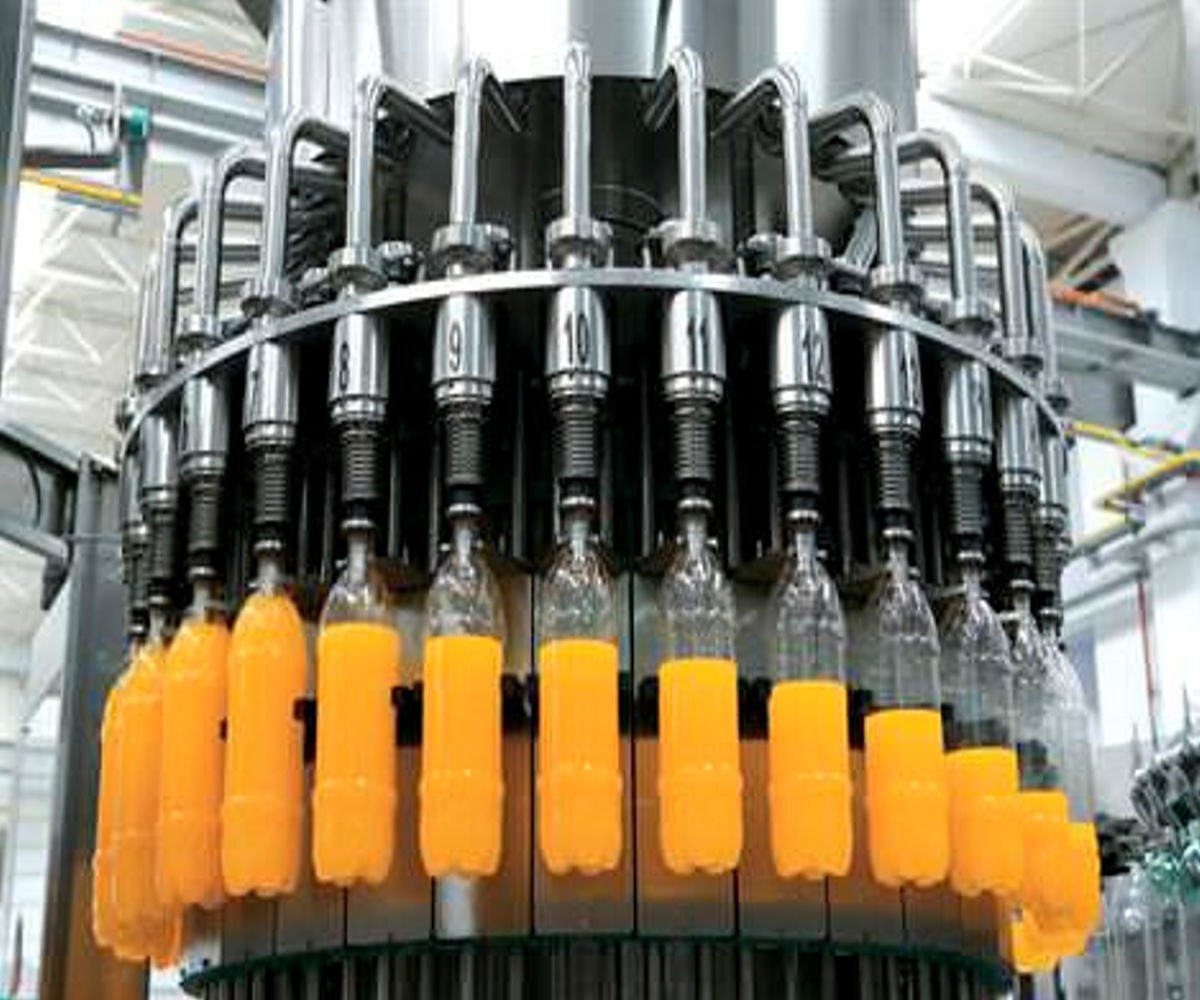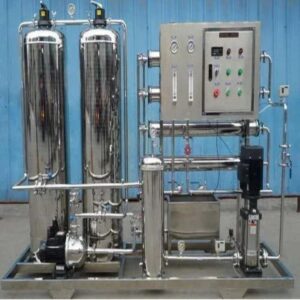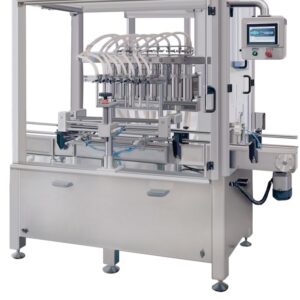Description
| Parameter | Description |
|---|---|
| Machine Type | Automatic Juice Filling Machine |
| Capacity | Varies depending on model; typically 1000-10000 bottles/hour |
| Filling Volume Range | 100ml – 1000ml (adjustable) |
| Material | Stainless Steel 304/316 |
| Filling Accuracy | ±1% |
| Bottle Types Supported | PET Bottles, Glass Bottles, etc. |
| Power Supply | 220V/380V, 50Hz/60Hz |
| Power Consumption | Depends on machine size and configuration |
| Control System | PLC (Programmable Logic Controller) |
| Operating Interface | Touch Screen |
| Air Pressure | 0.6-0.8 MPa |
| Dimensions (L×W×H) | Varies depending on the model |
| Weight | Varies depending on the model |
| Features | CIP (Clean-In-Place) System, Automatic Bottle Feeding, Bottle Positioning System, Anti-drip Nozzles, etc. |
| Optional Accessories | Cap Feeding System, Labeling Machine, Capping Machine, Inkjet Printer, etc. |
The juice-filling machine is a sophisticated piece of equipment designed to efficiently and accurately fill containers with various types of juices. These machines are commonly used in the beverage industry, where speed, precision, and hygiene are paramount. Typically, juice-filling machines are equipped with multiple stations that handle different aspects of the filling process, including container sterilization, filling, capping, and labeling.
One of the key features of these machines is their ability to maintain the quality and integrity of the juice throughout the filling process. They are often designed with special mechanisms to prevent contamination and ensure that the juice remains fresh and free from impurities.
Juice-filling machines come in a variety of sizes and configurations to accommodate different production needs, ranging from small-scale operations to large-scale manufacturing facilities. They are also highly customizable, allowing manufacturers to adjust parameters such as fill volume, container size, and filling speed to meet specific requirements.
Types of juice filling machine machine
Rotary Juice Filling Machine: These machines operate on a rotary platform, where containers are fed into the system and moved through different stations for filling, capping, and labeling. Rotary juice-filling machines are suitable for high-speed production lines and offer excellent efficiency.
Piston Juice Filling Machine: Piston-filling machines utilize a piston mechanism to precisely measure and dispense juice into containers. They are versatile and can handle a wide range of juice viscosities, making them ideal for filling thick or pulpy juices.
Gravity Juice Filling Machine: Gravity-filling machines rely on the natural force of gravity to fill containers with juice. They are commonly used for filling thin or low-viscosity juices and are relatively simple in design, making them easy to operate and maintain.
Volumetric Juice Filling Machine: Volumetric filling machines measure juice by volume and dispense a predetermined amount into each container. They are highly accurate and suitable for filling consistent volumes of juice.
Vacuum Juice Filling Machine: Vacuum filling machines remove air from containers before filling, which helps to extend the shelf life of the juice by reducing oxidation. They are commonly used for filling sensitive juices that require minimal exposure to air.
Aseptic Juice Filling Machine: Aseptic filling machines are designed to fill juice into sterile containers under sterile conditions, ensuring the preservation of freshness and preventing contamination. They are commonly used for filling juices that do not undergo further pasteurization or sterilization after filling.
Applications of juice filling machine machine
Beverage Industry: One of the primary applications of juice-filling machines is in the beverage industry, where they are used to fill a wide range of juices, including fruit juices, vegetable juices, blends, and flavored waters. These machines help beverage manufacturers maintain high production rates while ensuring consistent fill levels and product quality.
Food Processing: Juice filling machines are also utilized in food processing facilities where juices are used as ingredients in various food products such as sauces, soups, marinades, and dressings. These machines enable efficient and precise filling of containers, contributing to the overall manufacturing process.
Health and Wellness: In the health and wellness sector, juice-filling machines are employed by companies producing fresh-pressed juices, smoothies, and health drinks. These machines allow for hygienic and controlled filling of bottles or pouches, preserving the nutritional value and freshness of the juices.
Hospitality Industry: Hotels, restaurants, and catering businesses utilize juice-filling machines to package and serve freshly squeezed or prepared juices to their customers. Whether it’s breakfast buffets, room service, or event catering, these machines help maintain consistency in juice portions and presentation.
Retail Sector: Juice-filling machines play a crucial role in the retail sector, where they are used to package and label bottled or canned juices for sale in supermarkets, convenience stores, and specialty shops. Automated filling processes ensure efficient production and packaging, meeting consumer demand for quality beverages.
Sports and Fitness: Companies in the sports and fitness industry often use juice-filling machines to package and distribute sports drinks, energy drinks, and protein shakes. These machines enable the precise filling of containers with the required volumes of beverages, catering to the needs of athletes and fitness enthusiasts.
Schools and Institutions: Juice-filling machines are employed in schools, colleges, and other educational institutions to provide students with healthy beverage options. Whether serving fruit juices during meals or offering refreshments at events, these machines help institutions meet nutritional guidelines while minimizing waste.
Healthcare Facilities: Hospitals, clinics, and healthcare facilities utilize juice-filling machines to package nutritional supplements, oral rehydration solutions, and liquid medications. These machines ensure accurate dosing and packaging, facilitating safe and convenient administration to patients.
Event Catering: Catering companies and event planners utilize juice-filling machines to provide beverages at various events such as weddings, conferences, and parties. Whether serving juice cocktails, mocktails, or non-alcoholic beverages, these machines help caterers efficiently handle large volumes of drink orders.
Export and Distribution: Juice filling machines are instrumental in the export and distribution of packaged juices to international markets. They enable manufacturers to meet packaging standards and regulations while ensuring product integrity during transportation and storage.
Functionalities of juice filling machine machine
Container Handling: Juice-filling machines are equipped with mechanisms to handle containers of different shapes, sizes, and materials. They can accommodate bottles, cans, pouches, cartons, and other packaging formats, ensuring versatility in production.
Cleaning and Sterilization: Before the filling process begins, juice filling machines often incorporate cleaning and sterilization modules to ensure the containers are free from contaminants. This helps maintain hygiene standards and prevents microbial growth in the filled juices.
Filling Mechanism: The core functionality of a juice-filling machine is to accurately fill containers with the desired volume of juice. Different types of filling mechanisms are used, such as piston filling, gravity filling, vacuum filling, and volumetric filling, depending on the viscosity and characteristics of the juice.
Precision Control: Juice filling machines are equipped with precise control systems to regulate the filling process. Parameters such as fill volume, filling speed, and flow rate are carefully monitored and adjusted to ensure consistency and accuracy in each filled container.
Capping or Sealing: After the containers are filled with juice, juice-filling machines often include capping or sealing stations to secure the contents. This may involve applying screw caps, snap-on lids, foil seals, or heat-sealed films, depending on the packaging format and requirements.
Labeling and Coding: Many juice-filling machines are integrated with labeling and coding systems to apply product labels, batch codes, expiry dates, and other information onto the containers. This helps with product identification, traceability, and compliance with regulatory standards.
Quality Control: Juice filling machines may incorporate sensors, cameras, or inspection systems to ensure the quality of filled containers. They can detect defects such as underfills, overfills, leaks, or misaligned caps, allowing for immediate corrective action and minimizing product wastage.
Integration with Production Line: Juice filling machines are often part of a larger production line, seamlessly integrated with other equipment such as juice pasteurizers, mixers, conveyors, and packaging machines. This integration ensures smooth workflow and efficient utilization of resources.
Sanitization and Maintenance: Proper sanitization and maintenance of juice filling machines are essential for ensuring product safety and prolonging equipment lifespan. These machines are designed with easy-to-clean surfaces, quick-change parts, and maintenance schedules to minimize downtime and maximize productivity.
Automation and Control: Modern juice filling machines feature advanced automation and control capabilities, allowing operators to monitor and adjust the filling process remotely. Programmable logic controllers (PLCs) and human-machine interfaces (HMIs) provide intuitive control interfaces for optimizing machine performance.
Product Changeover: Juice filling machines are designed to facilitate quick and efficient changeovers between different juice varieties or packaging formats. This minimizes downtime and allows manufacturers to respond swiftly to changing market demands.
Frequently Asked Questions
- What types of juices can be filled using a juice-filling machine?
Juice-filling machines can handle a wide range of juices, including fruit juices, vegetable juices, blends, flavored waters, and even thicker or pulpy juices.
- How does a juice-filling machine ensure accuracy in filling volumes?
Juice-filling machines utilize precise control systems and mechanisms such as piston filling, gravity filling, or volumetric filling to ensure accurate measurement and dispensing of juice into containers.
- Can juice-filling machines accommodate different container sizes and shapes?
Yes, juice-filling machines are designed to handle various container sizes, shapes, and materials, including bottles, cans, pouches, cartons, and jars.
- How does a juice-filling machine maintain hygiene during the filling process?
Juice-filling machines often incorporate cleaning and sterilization modules to ensure containers are free from contaminants, minimizing the risk of microbial growth and maintaining product integrity.
- What types of sealing methods are used in juice-filling machines?
Juice-filling machines can employ various sealing methods, including screw caps, snap-on lids, foil seals, and heat-sealed films, depending on the packaging format and requirements.
- Is it possible to customize the fill volume and filling speed on a juice-filling machine?
Yes, modern juice-filling machines are highly customizable, allowing manufacturers to adjust parameters such as fill volume, filling speed, and flow rate to meet specific production needs.
- How does a juice-filling machine handle quality control during the filling process?
Juice-filling machines may incorporate sensors, cameras, or inspection systems to detect defects such as underfills, overfills, leaks, or misaligned caps, ensuring product quality and minimizing waste.
- Can juice-filling machines be integrated into existing production lines?
Yes, juice-filling machines are often designed to be seamlessly integrated with other equipment such as pasteurizers, mixers, conveyors, and packaging machines, optimizing workflow and resource utilization.
- What maintenance is required for a juice-filling machine?
Regular maintenance tasks for juice filling machines include cleaning, lubrication, inspection of components, and replacement of worn parts, following manufacturer guidelines to ensure optimal performance and longevity.
- How does a juice-filling machine support sustainability efforts in the beverage industry?
Juice-filling machines help reduce packaging waste by accurately filling containers, minimizing product spillage and overfilling. Additionally, efficient filling processes contribute to energy savings and lower carbon emissions, aligning with sustainability goals in the beverage industry.





